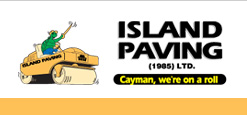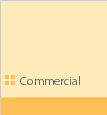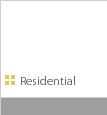 |
|
 |
StreetPrint™ Features and Benefits
 Back Back
 Streetprint Features & Benefits Streetprint Features & Benefits
 What is StreetBond™? What is StreetBond™?
 StreetBond™ Components StreetBond™ Components
 How is StreetBond™ Applied? How is StreetBond™ Applied?
 Why is StreetBond™ Special? Why is StreetBond™ Special?
 How Long Will StreetBond™ Last? How Long Will StreetBond™ Last?
Around the world
we have found that there are several important features which have resulted
in StreetPrint's success. The following are some of the features and benefits
of StreetPrint.
- Flexible Pavement – StreetPrint is a flexible pavement which makes it resistant
to cracking and eliminates the need for expansion joints compared with imprinted
Portland Cement concrete.
- Continuous Surface – StreetPrint is a continuous, waterproof surface which resists
weed growth and inhibits the migration of water to the base thereby reducing
the possibility of base failures due to erosion or freeze-thaw cycles. StreetBond
also reduces the effects of weathering from water, freeze-thaw cycles and sun
(ultra violet exposure).
- Easy Maintenance – StreetPrint is easily repairable and has low maintenance
costs.
- Salt Resistance – StreetPrint does not react to salt used for deicing or from
salt air in coastal climates. Portland Cement concrete products including cement
bricks can spall and degrade through the reaction of the cement with salt.
- Quick Installation – StreetPrint can be installed very quickly (as much as 10
times faster than cement bricks) resulting in much less disruption to traffic.
- Elaborate Decorative Patterns – StreetPrint makes it practical to create embossed
artwork in the surface. This can be done quickly and easily and creates a whole
new opportunity for decorative pavement designers. The photo below demonstrates
how both brick and non-brick StreetPrint can be used. This project was installed
in Las Palmas, Canary Islands in January of 1998 at the International Licensee
Conference. StreetPrint™ embossed artwork combined with StreetPrint™ brick patterns.
What is StreetBond™?
StreetBond is
the surfacing system used with StreetPrint Pavement Texturing to color and fortify
the surface. When cured, StreetBond is an Interpenetrating Network (IPN) which
means that, like composite materials or alloys, it is able to produce properties
that significantly exceed those of a single component system. StreetBond combines
polymer and cement technologies to achieve an exceptional combination of durability,
curing characteristics, performance properties and natural appearance.
StreetBond™ Components
StreetBond is
composed of wet and dry components that interconnect during curing to form a
durable surface with many beneficial performance characteristics.
These packages
are combined on site and water is added. As soon as the water is added the cement
begins to cure. As the water evaporates the other components are left behind
and begin to link together. StreetBond continues linking and film forming after
the water evaporates.
How is StreetBond™ Applied?
1. Sprayed on
2. Broomed into the surface
3. Cured StreetBond™
Why is StreetBond™ Special?
1. Very high polymer levels
2. Use of (Specialized) Cements
3. Use of Large Agregates
High Polymer Levels
- 1.1 Flexibility
-
Unlike concrete, the asphalt that is used as the substrate
for StreetPrint is a flexible pavement. Asphalt expands and contracts as
the temperature changes. This is why no expansion joints are required for
StreetPrint™. StreetBond™ has the flexibility to move with the asphalt,
not against it! StreetBond™ will not crack the asphalt.
- 1.2 Adhesion
-
Polymers
are the glue that holds StreetBond to the the asphalt surface. More glue
means better adhesion which means no pealing.
- 1.3 Abrasion Resistance
-
At lower polymer levels, the polymer can’t form a continuum
which means that the components are not thoroughly bonded. At StreetBond’s
polymer levels a polymer continuum is formed. The polymer is the primary
component that holds the particles together which results in higher abrasion
resistance and a stronger, more durable surface.
- 1.4 Color Stability
-
The polymers used in StreetBond are very resistant to the effects of ultra
violet light and the high level of polymer in StreetBond helps to stabilize
the pigments so that the rich colors are retained over time.
- 1.5 Chemical Resistance
-
The polymers in StreetBond have excellent resistance
to chemicals like oil, gasoline, brake fluid, transmission fluid, salt and
food products. The combination of the high polymer loading and the unusually
high build thickness created with StreetBond results in a layer that significantly
fortifies the asphalt.
- 1.6 Freeze Thaw Resistance
-
Higher polymer levels create a tighter, hydrophobic (i.e. water
repelling) surface. This allows less water to penetrate into the surfacing
system which provides protection from degradation caused by freeze thaw
cycles.
Use of (Specialized) Cements
- 2.1 Cure Time
-
StreetBond has a very thick film
compared to typical coating systems. Using cements reduces the cure time
by a factor of 6. This means a much faster return-to-service. In addition,
cement gives a rapid internal cure which gives immediate mechanical bond
to the asphalt upon drying.
- 2.2 Abrasion Resistance
-
Using cements increases abrasion resistance by a factor of 2 to 3.
- 2.3 Efflorescence
-
Using special cements reduces the chances of efflorescence by a factor of 10.
- 2.4 Natural Appearance
- Using cements provides abrasion resistance without making
the surface look plastic.
Use of Large Aggregates
- 3.1 Build Thickness
The use of
large aggregates allows StreetBond to create a 3 dimensional aggregate structure
within the film compared to typical thin film coatings. This increases durability
and increases the strength of the asphalt. In addition, chances of creating
a continuous film on an asphalt surface improve with greater build thickness.
This improves protection from solvents.
- 3.2 Slip and Skid Resistance (Pendulum Test – Wet)
The use of large aggregates increases both slip and skid resistance
resulting in a safer surface.
How Long Will StreetBond™ Last?
Long Life for
Pedestrian and Residential Applications. Residential and pedestrian applications
have demonstrated many years of life showing little, if any, significant wear.
Effects of Traffic
on StreetBond. The service life before reapplication of StreetBond depends on:
- the amount
of traffic the surface receives;
- the amount
of abrasive materials on the surface;
- the amount
of turning movements on the surface;
- whether the
surface is saturated with water for a period of time while exposed to traffic;
- whether studded
snow tires are used in the area.
Experience has
shown that, in traffic applications, a fresh layer of StreetBond may be required
in one to five years, depending on the service conditions described above and
on the Owner’s preferences.
Maintenance is
Easy and Cost Effective. Of course, in the event of wear, it is both fast and
cost effective to simply reapply a fresh layer of StreetBond to renew the surface.
Plus, wear is not of a structural nature. No trip hazard is created, nor is
there risk of the cost of the repair growing exponentially if the situation
is not dealt with immediately. This allows maintenance to be done at the convenience
of the owner, under the most favorable conditions.
Only StreetPrint
Allows Color to be Rejuvenated. One special benefit of StreetBond and StreetPrint
Pavement Texturing is that it is the only decorative pavement system that allows
the color to be rejuvenated.
Still have questions? Check out our commercial FAQ's section. Or contact us for more info.
|
 |







 Streetprint Features & Benefits
Streetprint Features & Benefits What is StreetBond™?
What is StreetBond™? StreetBond™ Components
StreetBond™ Components How is StreetBond™ Applied?
How is StreetBond™ Applied? Why is StreetBond™ Special?
Why is StreetBond™ Special? How Long Will StreetBond™ Last?
How Long Will StreetBond™ Last?